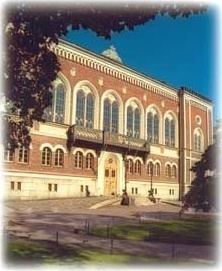Architect Georg Theodor Chiewitz | ||
 | ||
Similar House of the Estates, Helsinki Senate Square, Government Palace, Sederholm House, Helsinki Cathedral | ||
The House of Nobility either refers to the institution of the Finnish nobility or the palace of the noble estate. The Finnish nobility was until 1906 the first of the four estates of the realm.
Contents
The Estate
The estate of nobility existed fully starting from the 1809 Diet of Porvoo, and was formally organized in 1818.
Families of Finnish nobility were registered in the rolls of the Finnish House of Nobility, through a process called introduction to one's peers, after the royal/imperial creation.
First introductions in 1818 were registrations of those noble families registered in the Swedish House of Nobility whose male members lived in Finland and had sworn fealty to the emperor.
During the period of Finland being a Grand Duchy to Russia, a number of de novo creations and naturalizations were made by the Russian emperors. The first estate of the four estates of the realm of Finland existed until 1906 when a single chamber parliament was introduced. Baron August Langhoff was the last to be ennobled, in 1912. Hence, Finnish nobility today is a closed society. Today the House of Nobility is a hereditary association of members of registered nobility.
The families introduced to the Finnish House of Nobility together with a brief description of the origins of the family and the coats of arms are listed on the House of Nobility website.
The Ritarihuone / Riddarhuset building
The Finnish House of Nobility as corporation owns, since 1857, the assembly building completed in 1862.
The building, called Ritarihuone in Finnish and Riddarhuset in Swedish, (House of Knights) is of Neogothic style by G.T. Chiewitz. The building is located in Kruununhaka, downtown Helsinki. The block and its land is owned collectively by the Finnish nobility. There are the offices of the House, for example its General Secretary, the Chancellery, and the Genealogist as well as a library, archives and heraldic collections.
Lord Marshals
Traditionally, the Lord Marshal was the chairman of sessions of the noble class (House of Nobility) as well as the overall speaker of the Diet. The persons who held the office of Lord Marshal in various diet sessions, are listed below:
